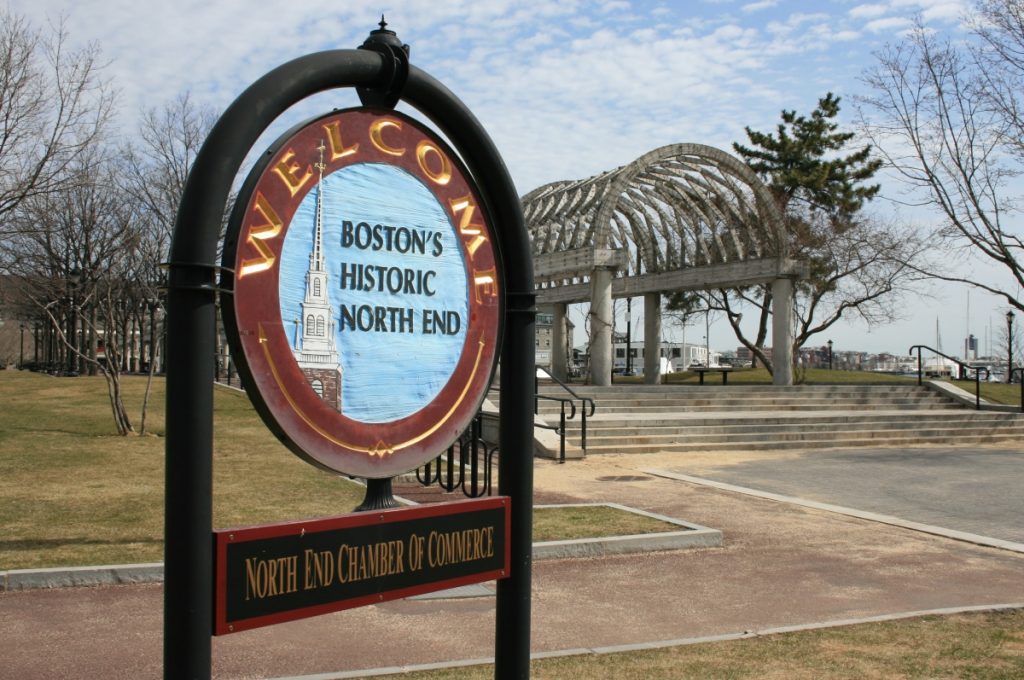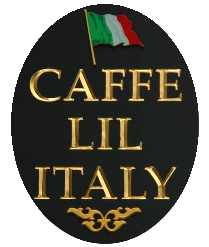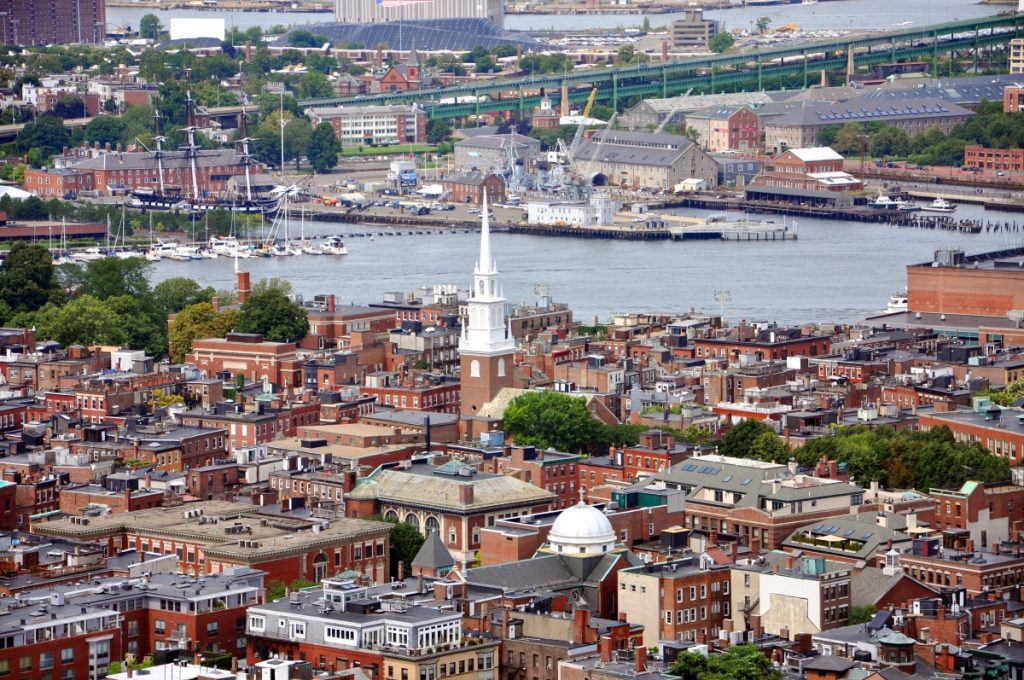The north end of Boston has been home to Paul Revere and countless waves of immigrants. In the mid-1800s, the Irish settled there and were its main ethnic group. However, by the end of the 1800s, they had been displaced by a large influx of Jewish immigrants. Finally, beginning in the early 1900s and continuing steadily through the 1960s, the north end became a bastion of Italian immigrants coming to America in search of work and opportunity. Though it gave rise to many Italian companies that went on to generate millions of dollars and epitomized the American dream, it was also the place of one of the most infamous acts of injustice towards Italian-Americans.
The effect that the influx of Italian immigrants had on the area was readily noticeable in the conversion of old Protestant churches to Catholic ones. Approximately 5 protestant churches were purchased by the Diocese of Boston during this time and new Catholic parishes were built from the ground up. In fact, the North End features the first Italian language church ( St. Leonard’s) ever to built in New England, which is the second oldest one of its kind in America.
 To understand the sheer size of the Italian immigrant population, one must look back at the groups that preceded them. The Irish, at their peak, numbered roughly 14,000 and the Jews numbered 17,000. The Italians, however, peaked at over 44,000. It has been suggested that as time progressed through the Italian immigration the entire area (99.9%) was Italian.
To understand the sheer size of the Italian immigrant population, one must look back at the groups that preceded them. The Irish, at their peak, numbered roughly 14,000 and the Jews numbered 17,000. The Italians, however, peaked at over 44,000. It has been suggested that as time progressed through the Italian immigration the entire area (99.9%) was Italian.
The best thing to have happened to the area, in terms of being an Italian, was that the whole area was basically ‘hand-picked.’ The sheer volume of Italians lead many to enter businesses where they could sell Italian specialty items that were wildly popular to the area’s residents. One example of this business model can be seen in the Pastene Corporation. Pastene was started by a Sicilian immigrant, Luigi Pastene who originally sold Italian products from a pushcart on the streets of the North End. After saving money, he decided that he could create a larger business that would specialize not only in basic Italian produce but imported ones as well. His business slowly grew and soon had spread to neighboring areas. Today, the Pastene Corporation has facilities in America, Canada, Italy and Cuba, and is still owned by descendants of Luigi. His American dream lives on.
Another company that was founded in the North End was Prince Pasta, which was started by three Sicilian immigrants. Initially, it was a small pasta manufacturing company located on Prince Street. In less than five years, the company needed to be expanded due to overwhelming popularity. Although initial expansion took place in the Boston area, it was not long before Prince was a national brand of pasta, beloved by Italians across the nation. The company saw continued success and was sold, in the 1980s to Borden Inc. for approximately $164 million dollars.
Despite the many success stories that the North End features, it also has a few blemishes on its remarkable record. Above all others is undoubtedly, the trial (if you’d like to call it that) of Nicola Sacco and Bartolomeo Vanzetti. In the aftermath of the killings and robbery of a shoe company employee and a guard in South Braintree for $15,000, eyewitness reports claimed that the perpetrators ‘looked Italian.’ Of course, this led the local police to question hundreds of Italian immigrants as to their whereabouts that day. The police seemingly settled on Sacco and Vanzetti because they were self proclaimed anarchists and ran to Mexico so as not be drafted by the US Army for WWI.
One of the key pieces of evidence used against both of them was that, when they were first arrested, they were both carrying guns. It was never proven that their guns were the guns used within the robbery, so that evidence is hardly justifiable. But perhaps the greatest injustice towards both of them was that, they had airtight alibis. Vanzetti was witnessed selling fish during the whole day in question, and Sacco was at the Italian Consulate having a passport photo taken. Both of these alibis were deemed ‘suspicious’ by the prosecution because they were verified ‘by other Italians.’ After that statement, it took little for an unsympathetic jury to convict both men of murder and sentence them to death. Protests were held around the world, to no avail. The two were executed on August 23, 1927 after several failed appeals. It is estimated that more than 100,000 people attended their funeral.
Much like their counterparts in Federal Hill, the Italian community began to become involved in local politics. To that end, In 1948, Foster Furcolo became the first Italian-American Congressman in 1948 and eight years later he became the first Italian-American Governor of Massachusetts. Fred Langone was elected in 1961 to the Boston City Council where he held the position for more than 20 years. Frank Belotti was Massachusetts’ Lieutenant Governor from 1963 to 1965, during the governorship of John Volpe, who was Massachusetts’ second Italian governor.
Today, the area is still heavily populated by Italian Americans, unlike their counterpart in New York’s Little Italy. It is home to more than ten feasts and religious ceremonies annually. And, with such an overwhelming Italian influence in the area, fine dining is par for the course.

